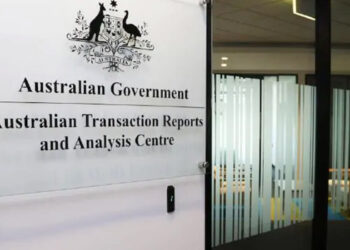Currently, in a bid to limit excessive borrowing in an environment of low interest rates and high household debt, APRA expects ADIs to assess loan serviceability using the higher of either an interest rate floor of at least 7 per cent or a 2 per cent buffer over the loan’s interest rate.
However, in a letter to all Australian banks issued on Tuesday, APRA has proposed removing its guidance that ADIs should assess whether borrowers can afford their repayment obligations using a minimum interest rate of at least 7 per cent.
Instead, ADIs would be permitted to review and set their own minimum interest rate floor for use in serviceability assessments.
“APRA will still expect ADIs to determine and keep under regular review their own level of floor rate, but ADIs will be able to choose a prudent level based on their own portfolio mix, risk appetite and other circumstances,” the letter read.
The regulator has also proposed that ADIs’ serviceability assessments incorporate an interest rate buffer of 2.5 per cent (up from its current level of 2 per cent) “to maintain prudence in overall serviceability assessments”.
APRA is also removing the expectation that a “prudent ADI” would use a buffer “comfortably above the proposed 2.5 per cent to “improve clarity of the prudential guidance”.
It is now seeking to amend the Prudential Practice Guide APG 223 Residential Mortgage Lending, in which the serviceability guidance appears.
APRA chair Wayne Byres said the operating environment for ADIs had evolved in the past decade, prompting APRA to review the ongoing appropriateness of the current guidance.
“APRA introduced this guidance as part of a suite of measures designed to reinforce sound residential lending standards at a time of heightened risk. Although many of those risk factors remain – high house prices, low interest rates, high household debt, and subdued income growth – two more recent developments have led us to review the appropriateness of the interest rate floor,” Mr Byres said.
“With interest rates at record lows, and likely to remain at historically low levels for some time, the gap between the 7 per cent floor and actual rates paid has become quite wide in some cases – possibly unnecessarily so.
“In addition, the introduction of differential pricing in recent years – with a substantial gap emerging between interest rates for owner-occupiers with principal-and-interest loans on the one hand and investors with interest-only loans on the other – has meant that the merits of a single floor rate across all products have been substantially reduced,” he said.
“The changes, while likely to increase the maximum borrowing capacity for a given borrower, are not intended to signify any lessening in the importance that APRA places on the maintenance of sound lending standards. Rather, it is simply recognition that the current interest rate environment does not warrant a uniform mandated interest rate floor of 7 per cent across all products.
“The proposed changes will provide ADIs with greater flexibility to set their own serviceability floors while still maintaining a measure of prudence through the application of an appropriate buffer to reflect the inherent uncertainty in credit assessments.”
A four-week consultation will close on 18 June, ahead of APRA releasing a final version of the updated APG 223 shortly afterwards.
Such a move has been discussed by several leading economists – with Christopher Joye telling Mortgage Business earlier this month that the central bank, APRA and the banking industry are considering reducing a key mortgage measure as an alternative to a cash rate cut.
However, Mr Joye said that the lenders, RBA and APRA could be looking at reducing the floor rate of 7.25 per cent by 50 basis points to 6.75 per cent.
He said: “If you run some rough numbers, for a typical borrower, that would allow them to improve their borrowing and housing purchase capacity by about 5 per cent, which is quite significant.
“I think the logic is that – given you can get a home loan for about 3.5 per cent right now – the chance of seeing a 7 per cent plus rate in the next five or 10 years is pretty slim. Particularly given the 10-year government bond yield share in Australia is 1.8 per cent… So, basically, bond markets are saying they don’t think the cash rate will increase for a decade, and yet we’re forcing borrowers to determine their borrowing capacity based on a minimum rate of 7 and a quarter, which seems outdated.”







